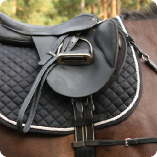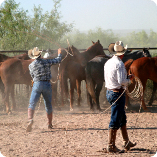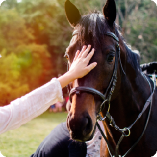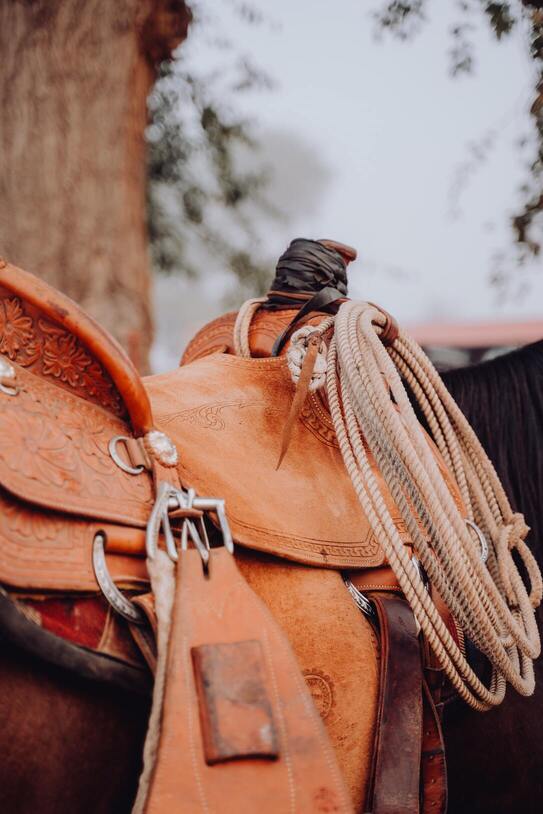Hooves; cracks, chips, care and cookies

Okay, no cookies here, but this sucker is long so maybe grab the bag and sit back for a few minutes to read. The gist of this article is how to know when a chipped or cracked hoof is something to worry about, and then, what you can do to help the hoof return to a beautiful and functional part of your horse.
Since this topic is entirely too broad to be covered in a short article, we will concentrate on generalities regarding the hoof and the problems you may encounter. I am unable to go into depth regarding the extreme cases of hoof damage and repair (cracks and chips that can’t be fixed by shoeing, for example) as my research for this piece revealed one thing: Every case is different and the “fix” may entail many different options along the way as the horse heals.
To cut to the chase, hoof care begins from the inside; in the gut to be specific. This means feeding your horse a nutritionally balanced ration and offering fresh, clean water, salt and other nutrients like biotin or other hoof supplements.
Care in general for the horse and his feet includes:
-
The obvious; regular farrier visits. And since each situation and horse is different, you’ll want to consult first with your farrier and your vet to determine the best protocol for you and your horse.
-
Quality hay that has been analyzed and has the proper calcium:phosphorus ratio and the correct protein content for you horse’s environment and work load.
-
Grain as needed, and watch for any metabolic issues that may indicate problems to come.
-
Supplements for hoof, hair, metabolic, joint, or other needs.
-
healthy gut: this includes, pre and probiotics, ulcer medications if indicated, and a healthy immune system.
-
Fatty acids are important for overall health and hoof strength. Flax seed (ground) is my go-to and helps the hooves and the hair coat, along with brain power, reduces inflammation, improves circulation and balances blood sugar. It’s an amazing addition to any feeding regime, in my opinion.
-
The environment. Such a huge topic, but the ground your horse walks on daily will dictate the kind of hoof he grows. Hot deserts produce hard, dry hooves, for example, and the opposite is true for wet, boggy areas, so take that into account as you help your horse grow his best hoof.
-
Moisture content is critical so if you are in the desert-dry climes, you’ll want to add a spot of mud to help the hooves stay moisturized. Easily done by adding a muddy bog near the water trough so that with each drink of water, the horse also helps his feet.
-
Pea-gravel is an outstanding source of footing in your horse’s paddock to help massage the frog and toughen the sole. Easy to clean mature up when using this as footing, too!
-
Exercise is as important as everything listed so far, and it doesn’t mean you have to ride everyday for X amount of time. It does mean that horses need to move. A large living area with differing terrain is fine for overall health and wellbeing.
- A topical ointment may help if it is applied to the coronary band, not oil-based (oil seals moisture out) and not over the entire hoof. You will find plenty of folks to disagree with that assessment, but this seems to be the general consensus. Of course there are always exceptions to every statement, so follow the advice of your veterinarian and farrier.
The above is basic horse husbandry and normal, average, expected everyday care, so if you see problems with your horse’s hooves, look to the points listed above before the problems worsen. Remember, too, that horses feet take about a year to grow out from coronary band to toe, so a ring at the midpoint is from a change in something--environment, feed, exercise—that happened months ago.
So what problems cause hooves to crack and chip?
-
Farrier visits are too far apart and hooves are too long. The hoof “knows” what it needs and it wants to be health. Given the right conditions (think wild horses who roam miles per day over uneven and varied terrain) the hoof will try to balance itself and correct too much length by chipping and breaking off as needed. In captivity, this just doesn’t work well.
-
Ground and environment are too dry and there is not enough moisture for the hoof to not chip or crack.
-
Hard surfaces can be too hard. Rock, ice, pavement and frozen dirt are all harder that a hoof. Something has to give.
-
Out of balance hoof. You’ll usually see chipping in the same area of the hoof; the quarters being most common.
-
Flares will chip off. Sometimes quite dangerously high on the hoof if not addressed soon enough.
-
Trauma. Usually to the coronary band that has now grown out enough and is a weak spot, but can also be trauma to the hoof directly.
-
Change in circulation can cause all sorts of issues, and is most often seen in laminitis cases.
-
Disease, such as founder, can cause changes to normal hoof shape when the hoof grows out incorrectly and the hoof will crack and, or chip.
-
Weather changes as in springtime when it goes from extremely wet and rainy to dry and hot, then back again. Moisture content, temperature and humidity matter!
-
General conformation can cause a horse to always grow a flare on a particular hoof and that area will inevitably chip off if conditions allow.
-
Genetics count and if the horse comes from stock with inferior feet or conformation, you’ll experience the effects of evolution first hand.
-
Abscesses can erupt through the coronary band or at any weak spot in the hoof.
The preventative care and remedies:
-
Start from the inside and feed a balanced and high quality diet. Adjust as needed to optimize body function.
-
Schedule regular farrier appointments and listen to their advice regarding your circumstances.
-
Keep your horse barefoot and allow his feet to do what they do—a healthy hoof is an amazing thing, but not all horses can be kept barefoot; consult your competent and educated farrier first.
-
Shoeing a horse can protect the hoof wall and keep the chips from occurring and is the only solution for some horses.
-
Boots. Booting your horse when riding can be a lifesaver and help your pocket book along with your horse’s feet.
-
Provide a mud puddle near the water trough to help maintain moisture.
-
Exercise your horse or allow him to self-exercise over varied terrain.
-
Clean and examine all hooves daily and don’t wait to address any issues found.
-
Watch for any changes in hoof; thrush, white line disease, gravel, etc.
-
Learn how your horse moves when he’s healthy and immediately check his feet if you see any changes in his mobility.
-
Stabilize cracks before they spread or extend upwards; this requires a farrier in most cases.
Extreme cases require extreme fixes and ALL require a qualified vet and farrier:
-
Some horses need shoes and sometimes, year-round, consult your vet and farrier.
-
Some horses can’t seem to keep shoes on, so special custom (usually expensive) shoes may be required.
-
Hoof casts are not unheard of in extreme hoof deterioration, applied by your farrier, not you.
-
Putty to fill a chip or crack—again, farrier and, or veterinarian must be consulted.
-
More frequent trims are required for some horses, and is enough, but can get costly.
-
Glue and nails combined to fill a high crack has been tried and may be effective; again, vet and farrier are required.
-
For cracks that are not responding, wire sutures may be an option. Yes, vet and farrier must be involved.
-
Lay-up for enough time to allow hoof growth. Advised by, you guessed it, V&F!
- Huge chips that are up high are difficult to fix, so creative farrier work is essential and the options employed are vast and quite different depending on individual cases.
Bottom line—and I really need to end this thing before it reaches book length—is that it all comes back to the saying, “No hoof, no horse,” so double down, run don’t walk, and get the experts out to help you when choosing which way to jump regarding your horse’s hooves. A veterinarian, nutritionist and especially a certified, well-educated farrier are invaluable and your biggest allies.
www.TanyaBuck.com is how to reach me directly, and to sign up for my email list and get free goodies, just fill out the form on the Home Page there.
If you’d like to keep in touch or want to contact me directly, sign up here and be assured that I’ll send you very few direct emails and each will always include some FREE goody!
Click here for your FREE. Original artwork Bookmark! https://lp.constantcontactpages.com/su/THHlynw/bookmark
***This piece is not written to offer any legal, medical, or professional advice and should not be construed as veterinary advisory recommendation to you or anyone else. Please obtain professional instruction from a qualified person concerning your own objectives and needs.
Keep your horses sound and have fun with them, Happily Ever After!
~Tanya Buck
(The accompanying photo is of a rescue horse we got who has a history of founder and laminitis. He’s come a long way!)


















